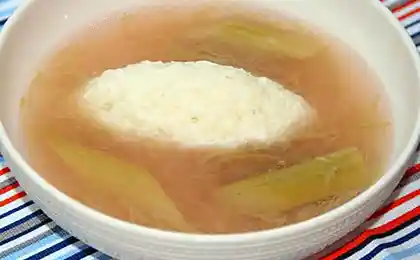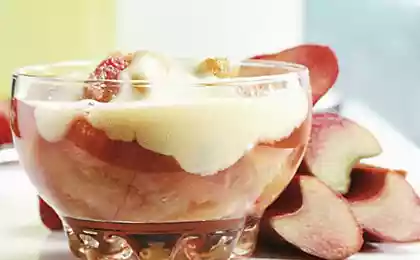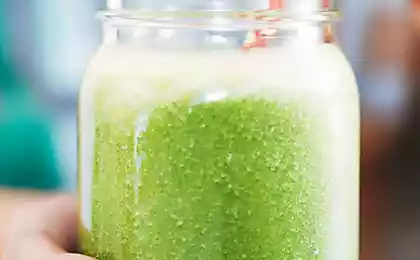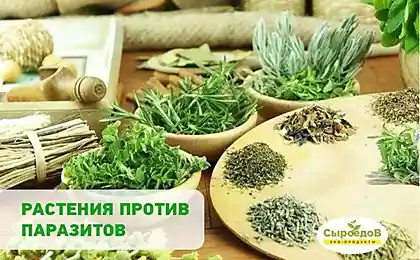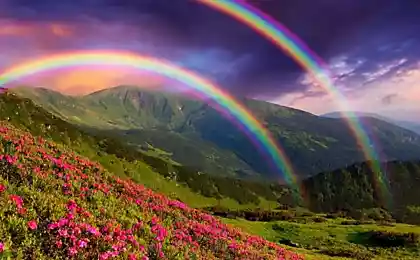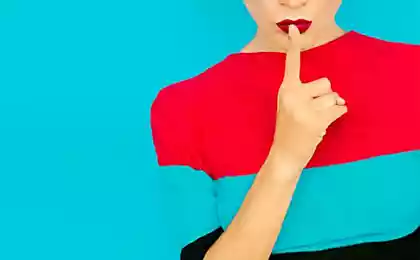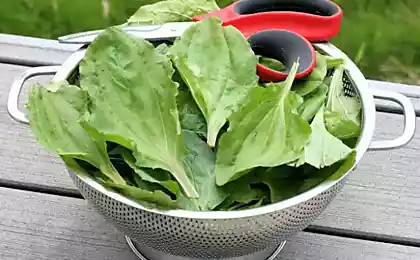745
Rhubarb — the stems are useful, and the leaves are dangerous

Rhubarb is an evergreen herbaceous plant with edible pinkish-red stalk. It is cold-resistant plant native to Siberia. Now it is popular in Europe and North America, where it is called the "pie plant", "plant pie". In their natural environment rhubarb forms dense thickets. It is a perennial plant, the lifetime of which reaches 10-15 years. Rhubarb is often propagated by division of the old root to the new one. The Mature plant has heart-shaped dark green leaves, length of petiole ranges from 30 to 45 inches. The stalks, stripped of leaves, are eaten. What is so useful to man rhubarb? And how can manifest its damage?

Resource Nutrition And You told a lot of interesting things about this amazing herb. Harvest rhubarb stems that are harvested in the second year, when they become quite long, and their thickness reaches 2.5-5 cm. Botanists refer it to the family Polygonaceae, genus Rheum. The scientific name of rhubarb is Rheum rhabarbarum. At all useful qualities of rhubarb, we should not forget that its leaves can be dangerous to humans. Rhubarb root is also poisonous.
Use rhubarb for health

Rhubarb is low in calories: 100 grams of fresh rhubarb stems that have an energy value of only 21 calories. In this case it contains vital phytonutrients, including dietary fiber, polyphenolic antioxidants, vitamins and minerals. In the stems of rhubarb does not contain neither cholesterol nor saturated fats.
In the stems of rhubarb contains several B vitamins — folate, Riboflavin, Niacin, vitamin B6 (pyridoxine), thiamin and Pantothenic acid.
In pink stalks contains more vitamin A. in addition, the stalks of rhubarb contain a small amount of these polyphenolic flavonoid compounds like β-carotene, zeaxanthin and lutein. In the human body, these compounds are converted into vitamin a and have the same protective effect as vitamin A. vitamin a is a powerful natural antioxidant essential for the body to maintain the integrity of skin and mucous membranes. This vitamin is also necessary for maintaining healthy vision. Studies have shown that eating vitamin A rich natural foods help prevent lung cancer and oral cavity.
Like brocoli and spinach, and some other edible plants, reveneue stems contain considerable amount of vitamin K. 100 grams of rhubarb stalks contains 29,3 micrograms of this vitamin, accounting for 24% of the recommended daily value of consumption. Vitamin K plays a role in maintaining bone health due to its osteotropic (contributing to the formation and strengthening of bones) activity. Sufficient amounts of vitamin K in the diet helps to reduce damage to neurons of the brain damage. This means that this vitamin plays a role in the treatment of Alzheimer's disease.
In the stems of rhubarb also contains useful amounts of minerals — iron, copper, calcium, potassium and phosphorus. But most of these minerals are not absorbed by the body, as under the influence of the oxalic acid is converted into insoluble complexes and excreted.
Selecting and storing rhubarb

Give preference to fresh, firm stalks with bright colors. Avoid wilted stalks with spots on the surface. The house, the stems should be folded in a plastic bag and store in the refrigerator at 0 °C and 95% relative humidity. In this case, the rhubarb stay fresh for two to three weeks.
Precautions
Green fragments of leaf plates of rhubarb contain incredibly large amounts of oxalic acid. It is a natural compound found in some vegetables. 100 grams of leaves of rhubarb contain from 0,59 to 0,72 milligrams of oxalates. Oxalates can cause lead poisoning and cause heavy intoxication symptoms — burning eyes, oral cavity and throat, swelling of the skin and shortness of breath. In severe cases, there may be kidney failure, convulsions and coma. Oxalate poisoning can be dangerous, warns on resource Nutrition And You. It should therefore be avoided.
Nutritional value of rhubarb

In parentheses are the percentage of the daily allowance. The nutritional value is given per 100 grams of fresh rhubarb according to information from the Ministry of agriculture of the United States.
General information:
energy value — 21 kilocalorie (1%);
carbohydrates 4.54 grams (3%);
protein — 0.90 grams (2%);
fats — 0.20 grams (1%);
cholesterol — 0 milligrams (0%);
fiber, part of the food — 1.8 grams (5%).
Vitamins:
folates — 7 micrograms (2%);
nicotinic acid — 0,300 milligrams (2%);
Pantothenic acid of 0.085 milligrams (1,5%);
pyridoxine (vitamin B6) — 0,024 mg (2%);
Riboflavin (vitamin B2) — 0.030 milligrams (2%);
thiamine (vitamin B1) — 0.020 milligram (2%);
vitamin a — 102 international units (IU, IU) — 3,5%;
vitamin C 8 mg (13%);
vitamin E — 0.27 mg (2%);
vitamin K for 29.3 micrograms (24%).
Electrolytes:
sodium — 4 milligrams (0,5%);
potassium — 288 mg (6%).
Minerals:
calcium, 86 milligrams (8,5%);
copper — 0,021 milligrams (2%);
iron — 0.22 mg (3%);
magnesium — 12 milligrams (3%);
Margaret — 0,196 milligrams (8,5%);
phosphorus — 14 mg (2%);
selenium was 1.1 micrograms (2%);
zinc — 0.10 mg (1%).
Phytonutrients:
alpha-carotene (α-carotene) — 0 micrograms;
beta-carotene (ß-carotene), which is rich in carrots — 61 micrograms;
beta-cryptoxanthin (ß-cryptoxanthin) — 0 micrograms;
lutein-zeaxanthin — 170 micrograms.

published
P. S. And remember, only by changing their consumption — together we change the world! ©
Source: hi-news.ru
The juice of the nettle is an effective detoxification of the body and not only
The fastest and most effective means of self-healing and healing the body

